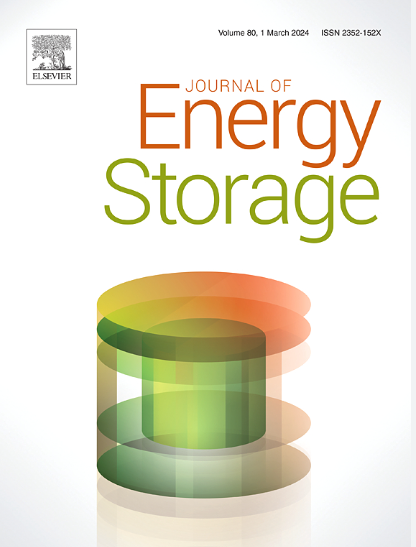Techno-economic approach for energy management system: Multi-objective optimization algorithms for energy storage in standalone and grid-connected DC microgrids
IF 8.9
2区 工程技术
Q1 ENERGY & FUELS
引用次数: 0
Abstract
This document discusses energy management in storage systems connected to rural and urban direct current (DC) microgrids, to improve technical, economic, and environmental indicators proposing a mathematical model with three objective functions for a multi-objective approach: minimizing grid operating costs, reducing energy transport losses, and reducing CO emissions. The multi-objective model includes different operational constraints of the DC microgrid. This applies to scenarios of grid connection with both fixed and variable energy costs, as well as to isolated DC microgrids with diesel generators. All of this occurs within an environment with distributed energy resources, specifically photovoltaic generators and energy storage systems. Multi-objective optimization algorithms, such as Particle Swarm Optimization (MPSO), Grasshopper Optimization Algorithm (MGOA), Salp Swarm Algorithm (MSSA), and Ant-Lion Algorithm (MALO), are used to solve multi-objective problems. These algorithms are combined with an hourly power flow method based on successive approximations. The methodologies have been validated through two test scenarios. The first scenario had 27 nodes in a rural environment, while the second had 33 nodes in an urban environment. These scenarios were designed to represent average day generation and energy demand conditions in Colombia. Each scenario involved the integration of three distributed photovoltaic generators and three lithium-ion batteries. The objective was to assess the solution quality and processing times by iteratively running each algorithm 100 times.
能源管理系统的技术经济方法:独立和并网直流微电网储能的多目标优化算法
本文讨论了与农村和城市直流(DC)微电网相连的储能系统中的能源管理,以改善技术、经济和环境指标,提出了一个具有三个目标函数的多目标数学模型:最小化电网运行成本、减少能源运输损耗和减少二氧化碳排放。多目标模型包括直流微电网的不同运行约束。这既适用于具有固定和可变能源成本的并网方案,也适用于使用柴油发电机的孤立直流微电网。所有这些都发生在分布式能源环境中,特别是光伏发电机和储能系统。多目标优化算法,如粒子群优化算法 (MPSO)、蚱蜢优化算法 (MGOA)、Salp Swarm 算法 (MSSA) 和蚁狮算法 (MALO) 可用于解决多目标问题。这些算法与基于逐次逼近的每小时功率流方法相结合。通过两个测试场景对这些方法进行了验证。第一个场景在农村环境中有 27 个节点,第二个场景在城市环境中有 33 个节点。这些场景的设计代表了哥伦比亚日均发电量和能源需求状况。每个场景都涉及三个分布式光伏发电机和三个锂离子电池的集成。目的是通过反复运行每种算法 100 次来评估解决方案的质量和处理时间。
本文章由计算机程序翻译,如有差异,请以英文原文为准。
求助全文
约1分钟内获得全文
求助全文
来源期刊

Journal of energy storage
Energy-Renewable Energy, Sustainability and the Environment
CiteScore
11.80
自引率
24.50%
发文量
2262
审稿时长
69 days
期刊介绍:
Journal of energy storage focusses on all aspects of energy storage, in particular systems integration, electric grid integration, modelling and analysis, novel energy storage technologies, sizing and management strategies, business models for operation of storage systems and energy storage developments worldwide.
 求助内容:
求助内容: 应助结果提醒方式:
应助结果提醒方式:


